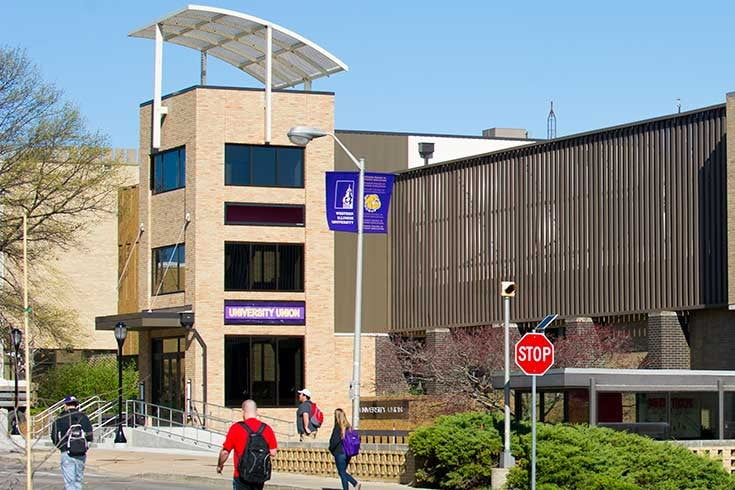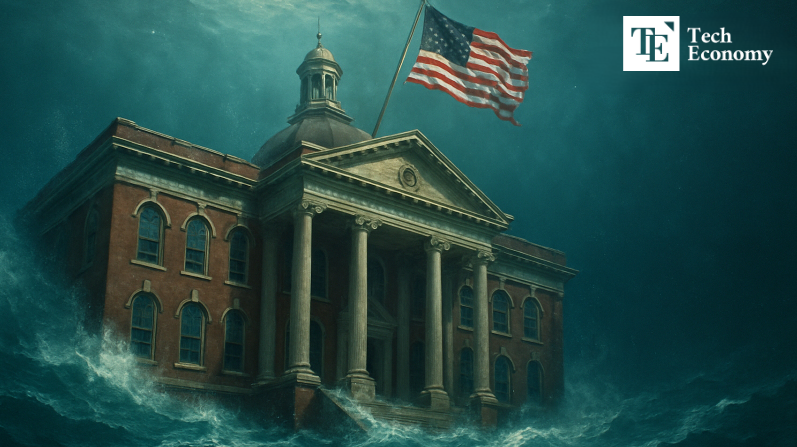“Only the Elites Thrive”: U.S. Colleges Collapse Under Population Decline and Prestige Concentration
Input
Modified
American Higher Education in a Survival War Declining student population and mounting financial strain Layoffs of faculty and inevitable campus closures

A new form of “Rust Belt” has begun to take shape in the United States, and the epicenter is the nation’s colleges. Once anchors of local economies, universities are now shuttering under the dual pressures of shrinking student populations and intensified concentration of enrollment in elite institutions. The fallout is devastating nearby communities, with shuttered campuses hollowing out surrounding businesses, creating what analysts describe as a “new Rust Belt.” With demographic decline and economic pressures expected to persist for at least another decade, closures, layoffs, and broad restructuring across higher education appear unavoidable.
Half a Million Fewer Graduates by 2041, Urban Populations Decline Amid Low Birthrates and High Inflation
According to the Western Interstate Commission for Higher Education (WICHE)’s 2024 High School Graduate Projections released earlier this year, the U.S. will see high school graduates peak at 3.9 million in 2024 before declining to below 3.4 million by 2041.
The trend is already visible. A Brookings Institution study found that from 2019 to 2022, enrollment in urban public schools nationwide fell by more than 5% (about 84,000 students). During the same period, 68 city schools closed, marking a 0.3% contraction rate.
The primary drivers are both demographic and economic. Persistently high interest rates and elevated living costs are prompting residents to leave cities in search of affordability, further eroding the urban student base. Parents are also increasingly steering children toward cheaper education options. “Conditions in higher education are not improving—if anything, they are deteriorating,” warned Patrick Lane, WICHE’s vice president for policy analysis and research. “Elementary schools are already experiencing this reality.”
When Campuses Close, Local Economies Collapse
Experts predict the sharpest enrollment declines in the Northeast and Midwest, regions most vulnerable to declining birthrates. Western Illinois University in Macomb, Illinois, epitomizes this transformation. Once home to 800-student dormitories, those buildings have now been repurposed into police training facilities, with others demolished into overgrown lots. This summer, two more dormitories are set to close, according to The Wall Street Journal.
During the baby-boom era of the 1960s and 70s, Western Illinois thrived, with enrollment peaking at 15,469 in 1973. Since 2010, however, enrollment has halved—from 10,377 students in 2010 to 5,511 in 2023. Faculty headcount shrank 38% over the same period.
As the university declined, so too did its host city. Macomb’s population dropped 23% over the same span, falling to 14,765 residents. The trend extends nationwide. According to The Hechinger Report, between 2011 and 2023, three-quarters of college-dependent towns grew at slower rates than the national average, a sharp reversal from a decade earlier when they had been outperforming the rest of the country.

Financial Strain Driving Institutional Closures
The crisis is also being compounded by widening inequality between institutions. A growing number of students are opting out of college altogether, calculating that the burden of tuition combined with forgone wages makes enrollment in lower-tier schools an unattractive investment. Meanwhile, enrollment is becoming further concentrated in prestigious universities, seen as a guarantee of higher-paying jobs. “More and more students who choose to attend college are aiming for elite institutions,” noted Richard Vedder, professor emeritus of economics at Ohio University. “They believe those diplomas will secure them better employment.”
A Washington Post analysis of 748 four-year public universities across 50 states found that from 2015 to 2023, enrollment at flagship state universities rose 9% on average, while all other state campuses saw a 2% decline. In Tennessee, the University of Tennessee’s enrollment surged 30% over the period, while the other 10 state campuses combined posted a 3% decline. Wisconsin exhibited a similar pattern: the flagship University of Wisconsin rose 16%, while the rest of the system dropped 9%.
More institutions are now succumbing to financial pressures and announcing outright closures. In May, St. Andrews University, a branch of Webber International University, declared it would cease operations. “We exhausted every possible alternative, but the financial and enrollment challenges St. Andrews faced were insurmountable with internal measures alone,” explained Webber President and CEO Nelson Marquez, calling the closure “a painful but inevitable decision.” According to the National Center for Education Statistics, St. Andrews had only 832 students enrolled in fall 2023.
Within days of that announcement, Limestone University in Gaffney, South Carolina—an institution with 180 years of history—also declared closure. Board chair Randall Richardson stated in a letter posted to the school’s website: “Despite all efforts to secure necessary funding, we reached the conclusion that sustaining operations was no longer viable.”





















